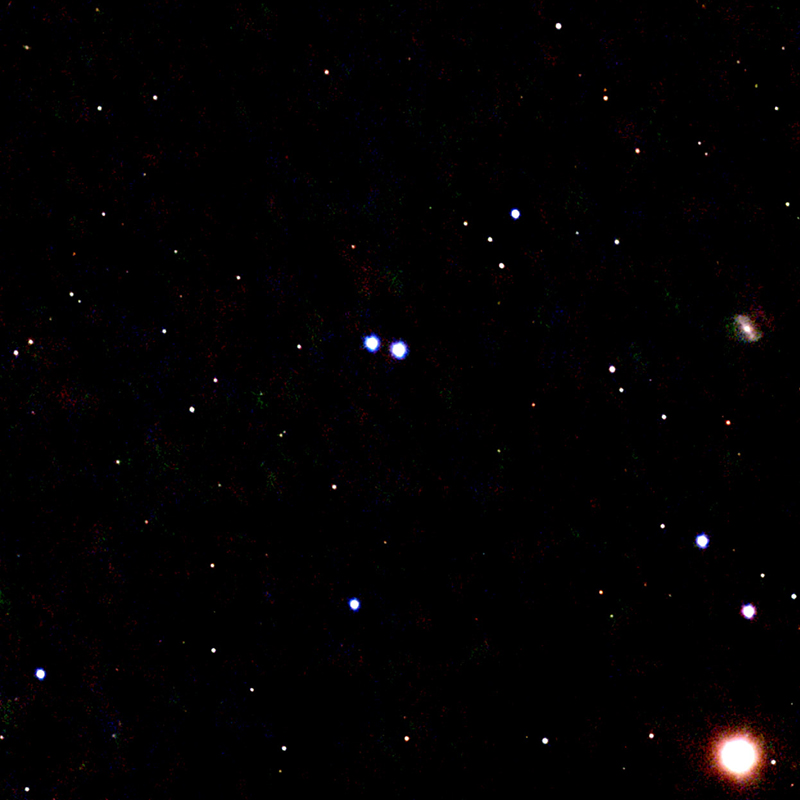M40 - Winnecke 4

Credits: Keith Turnecliff, Nerja, Spain
Messier 40 (M40), also known as Winnecke 4 (WNC 4), is a double star located in the constellation Ursa Major, the Great Bear.
M40 lies at a distance of 510 light years from Earth. It is one of the few Messier objects that are not deep sky objects, but were catalogued by mistake.
It was not listed in the New General Catalogue (NGC).
Messier 40 is easy to find as it lies right next to Megrez, one of the bright stars that form the Big Dipper asterism in Ursa Major.
Megrez is the star that connects the handle of the Big Dipper to the cup, or the star at the base of the Great Bear‘s tail.
Facts about M40 by Keith Turnecliff
Winnecke 4 (also known as Messier 40 or WNC 4) is a double star consisting of two unrelated stars in the constellation Ursa Major.
WNC 4 was discovered by Charles Messier in 1764 while he was searching for a nebula that had been reported in the area by Johannes Hevelius.
Not seeing any nebulae, Messier catalogued this double star instead.
It was subsequently rediscovered by Friedrich August Theodor Winnecke in 1863, and included in the Winnecke Catalogue of Double Stars as number 4.
Burnham calls M40 "one of the few real mistakes in the Messier catalog," faulting Messier for including it when all he saw was a double star, not a nebula of any sort.

Best viewed with resolution 1920 x 1080.
Credits: Image courtesy of Starry Night Pro Plus 8, researched and implemented by Keith Turnecliff.